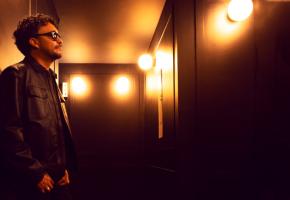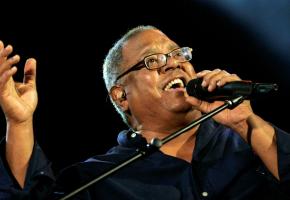Los Panchos (also known as Trío Los Panchos) first met in 1944 in New York City, where Mexicans Alfredo Gil and Chucho Navarro, and Hernando Aviles from Puerto Rico. While each member played a guitar and sang, Aviles sang lead and had a powerful voice, while Gil and Navarro sang harmony and played requinto guitars (smaller, higher-tuned instruments invented by Gil).
Between 1946 to 1948, Los Panchos performed in the United States, including a performance at Radio City Music Hall in New York City. They began touring internationally in 1946 and later that year, the group moved to Mexico, considered the capital of Latin music where many Latin and Iberian artists have jumped to international fame. They were welcomed with open arms and XEW-AM, the most popular radio station in Mexico City, reserved a time slot for their music. In 1951, Los Panchos launched another international tour across Latin America. Their appearance in movies during the Golden Age of Mexican cinema cemented their international fame.
Julito Rodriguez joined the group in 1952, who was replaced by Johnny Albino in 1958 who was a studio musician for CBS. In 1964, CBS proposed to the members of the trio, then made up of the two founding members and Johnny Albino, to accompany a female voice for the first time. They decided on American vocalist Eydie Gormé (of Judeo-Spanish descent) who had several years recording experience in the United States and who was just beginning to record in Spanish.
The collaboration between Gormé and Los Panchos resulted in one of their best-selling albums ‘Amor (Great Love Songs In Spanish). ’ It was so successful they followed it up with a sequel album ‘More Amor / Cuatro vidas’ (with Eydie Gormé). The Albino era became one of the most prosperous ones for Los Panchos, but it ended with Albino’s tumultuous departure in 1968, which left bad feeling with the group's management.
In 1971, Ovidio Hernández joined the band as lead vocalist, a part he would fulfill until his untimely passing of complications of meningitis in 1976. Following him, Rafael Basurto Lara joined as lead singer, he is today the last living person to have been a lead vocalist in the original Trio Los Panchos ("original" referring to any lineup that included founding members Gil and Navarro).
Alfredo Gil played with Los Panchos until his retirement in 1981 (he died in 1999) and Chucho Navarro played with the group until his death in 1993.
A characteristic instrument of Los Panchos and many more bolero trios after them is the Requinto guitar, which is smaller and tuned higher than a standard guitar, and was invented by Alfredo Gil, founding member of Los Panchos. Requinto soli are typically part of a bolero song.
Today, there are several trios claiming to be the rightful successors to the original trio, with Rafael Basurto Lara, lead singer of the original Trio Los Panchos since 1976 still being the lead voice of one of them. Another Trio Los Panchos is currently under the musical direction of Gabriel Vargas Aguilar, the adopted son of co-founder Gil. This band, now based in Veracruz, Mexico, still continues to perform concerts across Mexico, Latin America, and the United States, with a newer cast of singers.

















